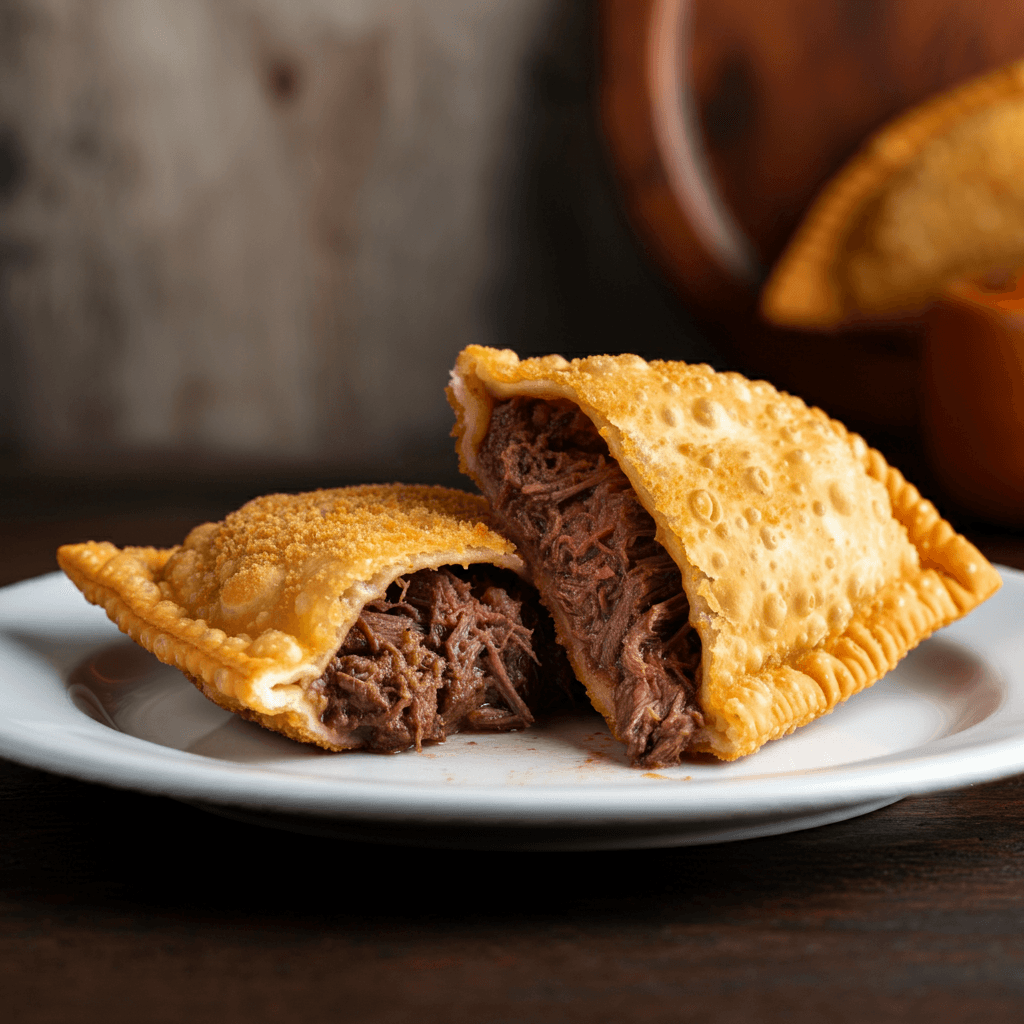Introduction to pastèl
The Brazilian beef pastel is a popular street food that embodies Brazil’s diverse culinary influences. Originating in the early 20th century, this snack was introduced by Portuguese settlers who began frying dough filled with various ingredients. As local Brazilian ingredients were incorporated, the simple idea evolved into a widely cherished treat.
Historical Influences
The recipe saw significant changes with the arrival of Japanese immigrants in the early 1900s. Many settled in São Paulo and adapted their recipes to fit local tastes. Restrictions on selling raw fish led them to use beef and cheese as fillings. This blend of Japanese cooking techniques with Brazilian ingredients resulted in the modern version of the pastel we enjoy today.
Brazilian Beef Pastel
Course: AppetizersCuisine: Brazilian, ColombianDifficulty: Medium4
servings30
minutes15
minutes250
kcalThis Brazilian meat pastel formula is simple to take after. It employments a fresh mixture filled with top-notch ground hamburger, onions, garlic, and flavors. You overlap the batter over the filling and sear it until brilliant, and crunchy. This delightful nibble is idealize for any time of day and is beyond any doubt if you don’t mind everybody
Ingredients
- For the Filling:
1/2 lb (250g) ground beef
1 small onion, finely chopped
1 garlic clove, minced
1/2 bell pepper, chopped
1/2 tomato, chopped
1 teaspoon paprika
1/2 teaspoon cumin powder
1/4 cup black olives, chopped
1/4 cup parsley or cilantro, chopped
Salt and pepper to taste
- For the Dough:
1/2 cups all-purpose flour
1/4 cup cold water
1/4 cup vegetable oil
1/4 teaspoon salt
Instructions:
- Prepare the Dough
- Mix the dry ingredients: In a bowl, combine 1 1/2 cups of all-purpose flour and 1/4 teaspoon of salt.
Add oil and water: Pour in 1/4 cup vegetable oil and 1/4 cup cold water. Mix the ingredients together until the dough forms.
Knead the dough: Turn the dough onto a floured surface and knead for 2-3 minutes until it becomes smooth and elastic.
Rest the dough: Let the dough rest for about 15 minutes while you prepare the filling. - Make the Filling
- Cook the beef: In a skillet over medium heat, cook 1/2 lb of ground beef until it’s browned and fully cooked.
Drain any excess fat.
Add the vegetables: Stir in the chopped onion, minced garlic, bell pepper, and tomato.
Cook until the vegetables are soft, about 5 minutes.
Season the filling: Add the chopped black olives and parsley (or cilantro). Season with salt and pepper to taste.
Let the mixture cook for another 2-3 minutes, then remove from heat and allow it to cool. - Roll Out the Dough
- Roll the dough: After resting, roll out the dough on a floured surface until it’s thin (about 1/8 inch thick).
Cut the dough: Use a knife or a round cutter to cut the dough into small squares or circles, about 3-4 inches wide. - Assemble the Pastels
- Fill the dough: Place a small spoonful of the beef filling in the center of each dough piece.
Fold and seal: Fold the dough over the filling to form a triangle or half-moon shape.
Press the edges firmly with your fingers, then seal with a fork by pressing along the edges. - Fry the Pastels
- Heat the oil: In a deep fryer or a large skillet, heat vegetable oil over medium-high heat.
Fry the Pastels: Fry the Pastels in batches for about 2-3 minutes on each side, or until they are golden brown and crispy.
Drain: Remove the Pastels from the oil using a slotted spoon and drain on paper towels.
Notes
- Serve the pastels hot with your favorite dipping sauce, such as ketchup or hot sauce.
Varieties and Popularity
Brazilian beef pastéis come with various fillings. Savory options often include beef, chicken, cheese, and heart of palm, while sweet versions may feature guava paste or chocolate. This versatility has made pastéis a favorite at fairs, markets, and street food stands across Brazil. Each version offers a unique taste, appealing to a wide range of preferences.
Cultural Significance
The dish is more than just a snack; it symbolizes Brazil’s rich food culture. Its crispy exterior and diverse fillings make it a beloved part of Brazilian cuisine. Enjoyed at bustling markets and pastelarias (snack shops), the pastel continues to be a staple of Brazilian street food.
Conclusion
For those looking to experience authentic Brazil street food, the dishe is a must-try. Its history, variety of flavors, and cultural importance make it an integral part of Brazil’s culinary heritage.
